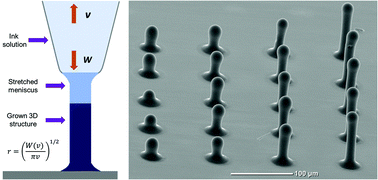Direct writing of 3D conjugated polymer micro/nanostructures for organic electronics and bioelectronics
Abstract
π-Conjugated polymers (CPs) constitute key elements for the emerging next-generation of bioelectronics, on the basis of their unique optoelectrochemical characteristics, biocompatibility, desired mechanical deformability and printing processability for high-throughput device fabrication. Direct growth of CPs into three-dimensional (3D) structures via solution-based processes has drawn significant attention, as it enables an unprecedented paradigm shift from conventional 2D thin-film-based electronics. Herein, we address 3D direct writing and meniscus-guided pen writing methods, which are capable of fabricating 3D micro/nanostructures from soluble CPs and CP precursors, and recent advances in these techniques. Moreover, we highlight some of the interesting devices developed and their applications that feature unique advantageous properties originating from the fabricated 3D micro/nanostructures of CPs. Finally, we present an outlook on the future direction and possible applications in this field. This perspective review is intended to provide a valuable insight into the emerging field of 3D micro/nanofabrication of CPs and their composites that may inspire the next generation of CP-based (bio)electronics.



 Please wait while we load your content...
Please wait while we load your content...